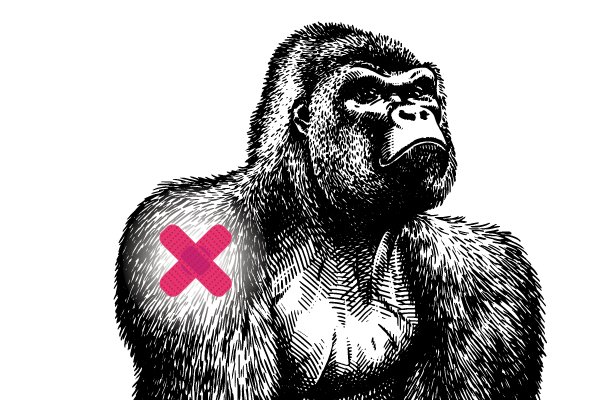Can Gorillas Get COVID? The Answer Is Yes.

The news that some members of the gorilla troop at the San Diego Zoo tested positive for the virus that causes COVID-19 ramps up the urgency for protecting great apes in the wild from exposure, warns Thomas Gillespie, an Emory disease ecologist.
“This first known transmission to apes confirms what we strongly suspected—that one of our closest living relatives is susceptible to the novel coronavirus,” says Gillespie, an associate professor in Emory’s Department of Environmental Sciences and Rollins School of Public Health. “More than ever, it’s a race against time. If gorillas in the wild become infected, it will be a much more dangerous scenario because we won’t have the ability to contain it.”
Thomas Gillespie, disease ecologist and associate professor of environmental health. 
In March 2020, Gillespie co-authored a Nature commentary warning that great apes are susceptible to human respiratory diseases and that COVID-19 could prove devastating to animals on the brink
of extinction.
The great apes include chimpanzees, bonobos, and gorillas, which live in equatorial Africa, and orangutans, which are native to the rainforests of Indonesia and Malaysia. The International Union for Conservation of Nature (IUCN) lists chimpanzees and bonobos as endangered species, while gorillas and orangutans are critically endangered.
Even viruses that have mild effects in people, such as those causing the common cold, have been associated with the deaths of wild primates. The San Diego Zoo Safari Park reported the presence of SARS-CoV-2, the coronavirus that causes COVID-19, after two of its gorillas began coughing. Fortunately, the infected zoo gorillas appear to be making a full recovery. The zoo recently announced it is inoculating many of its great apes against CoV-2 with a vaccine that is designed for nonhuman use.
Gillespie is a member of an IUCN task force focused on mitigating the impact of COVID on great apes and other primates. His lab is developing a spatially explicit model to investigate factors that affect the spread of the virus among wild primates, so governments and organizations can prioritize efforts to protect the animals.
Email the Editor







